#*{( konpeitou )}*
Explore tagged Tumblr posts
Text

he/she/they slay...
30 notes
·
View notes
Text
Random doodles
Ft. Cig
Cig made by @moon-0f-m4rs

Run little Crab Run!
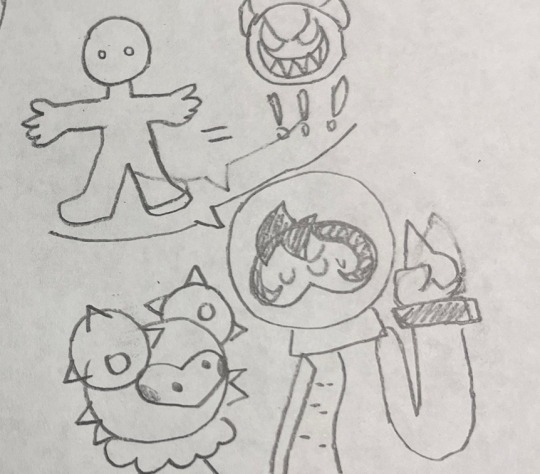
Sister knows best.
Humans = Monsters
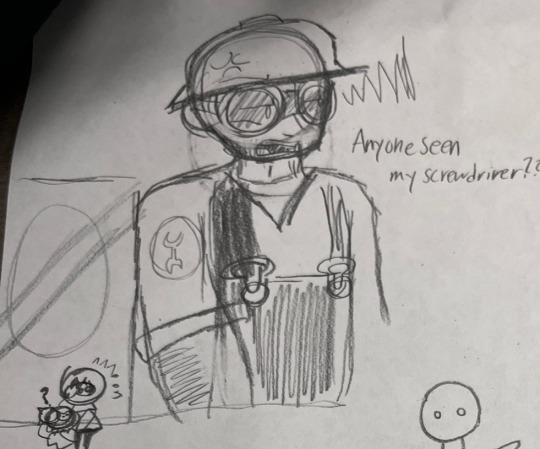
“Shhhh…”

Egg

They’d be great friends
#tf2 g/t#artwork#tf2#coralie 🦀#coralie🦀#g/t#giant/tiny#Kandy Konpeitou#Brother Araignée#team fortress#tf2 engineer#tf2 archimedes#tf2 medic#oc cig#not my oc
12 notes
·
View notes
Text
コンペイトウさん過激派 / POPY
#コンペイトウさん過激派#Konpeitou-san Kagekiha#Konpeito-san Extremist#捨て垢#STEAKA#ポピー#POPY#夢ノ結唱#Yumenokessho#synthesizer v#request
9 notes
·
View notes
Text
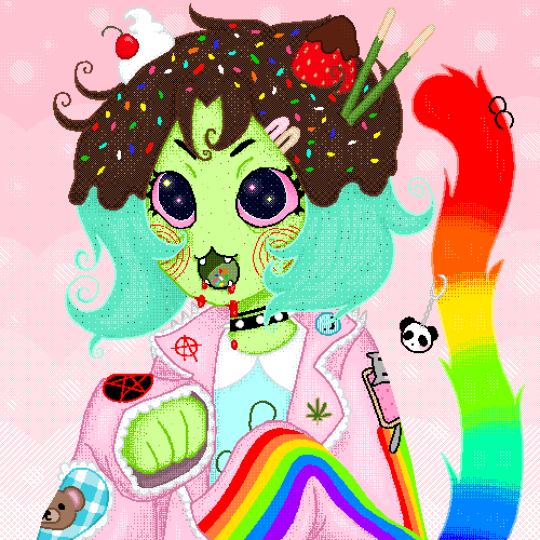

trickster nepeta fan design!
#it was hard to convey with tiny pixels but her eye sparkles are supposed to be konpeitou#and her rainbow tail is also inspired by those fluffy rainbow detachable tails that emos/scene kids/furries loved to use as an accessory#and her hair is supposed to be chocomint ice cream [my favourite flavour!!! :D]#i think all other details are obvious but if not please do not be afraid to ask :3#homestuck#nepeta leijon#nepeta fanart#trickster#homestuck fanart#nyan cat#pixel art#art#artists on tumblr#flipnote#flipnote art#flipnote brushes#hs nepeta#hs fanart#homestuck art#hs art
134 notes
·
View notes
Text
The Blair Siblings + Robin meeting Frères et Sœurs Crabes!
because ze crab family is cool an I love them
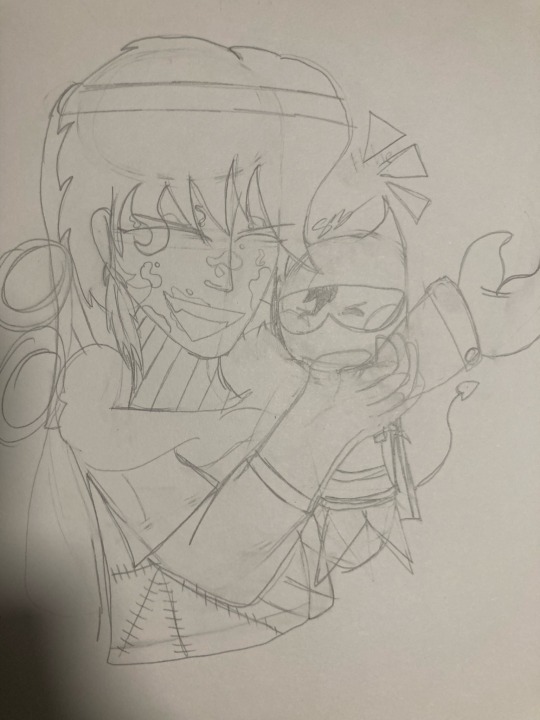
Best siblings that cause problems duo tbh

Cella's daily yapping about her favorite poisons

These two have things in common, oldest of the family, (over)protective, and they both have one arm and scars
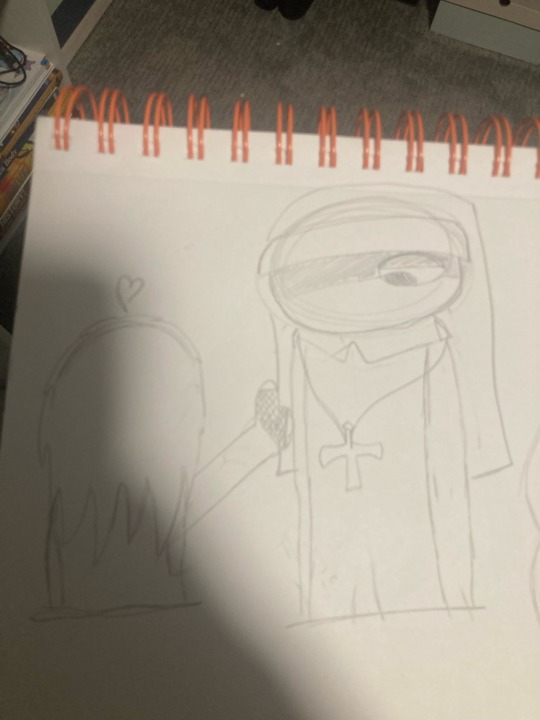
Got a bit lazy on this one, my bad-

Crab Child!!! 🥹
These guys would be great caretakers ( Bug at least, they know what it's like to take care of newborns)
Frères et Sœurs Crabes belongs to the amazing @bluecheesecakez!
#tf2#team fortress 2#tf2 g/t#tf2 oc#Frères et Sœurs Crabes#coralie🦀#Kandy Konpeitou#Brother Araignée#Sister Araignée#CRIMSON#🐛🪡#🧪🪶#🗝🌺#🕯🔥
5 notes
·
View notes
Text










♡ Heroine Otome Game ♡
❥ Ogikubo Nemuri [ Garasu no Konpeitou ]
#Garasu no Konpeitou#black hair#black eyes#agony/Kinshiiku#Gayoushi#Heroine Otome Game#perfect heroine#otome heroine#otome#otome game#Official art#cg art#my post#硝子のこんぺいとう#画用紙#Ogikubo Nemuri#荻窪 ねむり
4 notes
·
View notes
Text
Nihon shōjo (1976), Iroha ni konpeitou (1977), Tokimeki (1978), Gohan ga dekitayo (1980), Tadaiima (1981), Ai ga nakucha ne. (1982), OSOS (1984), Akiko Yano
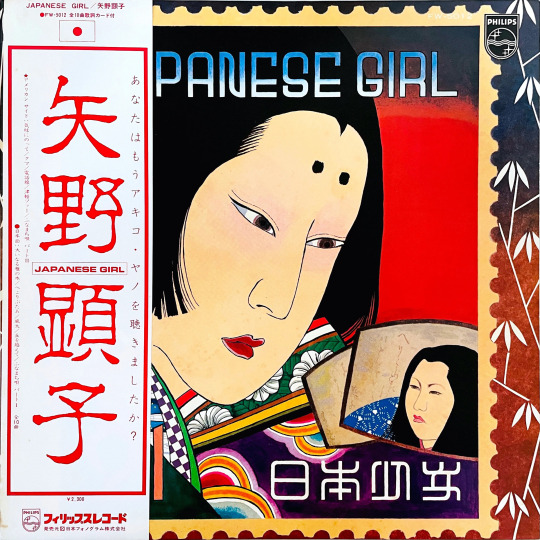
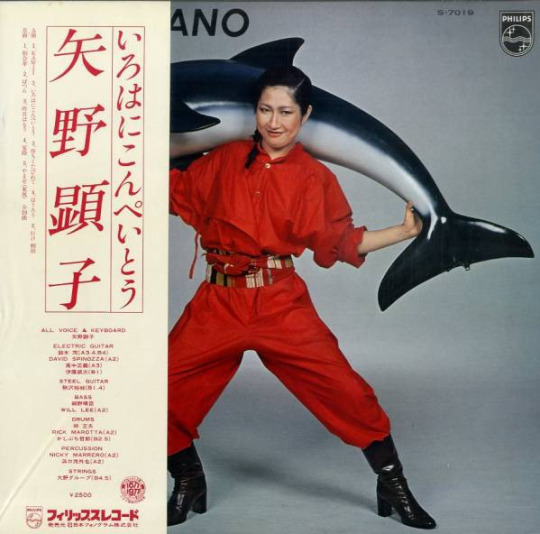
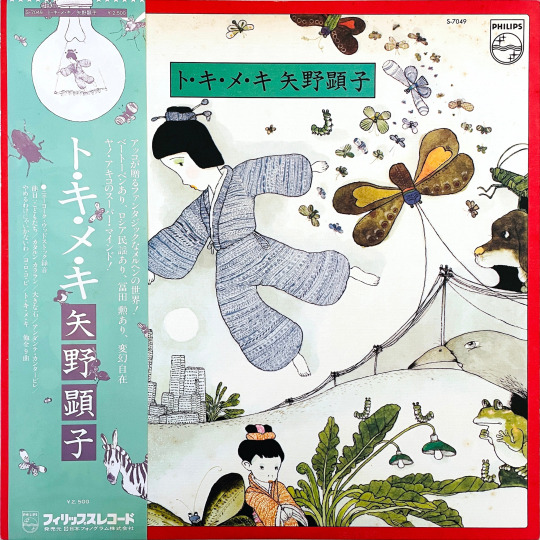
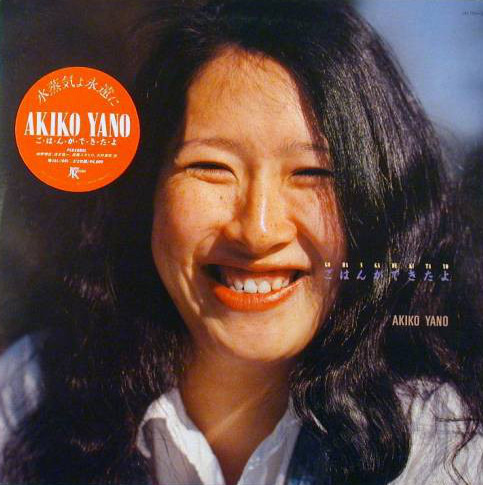

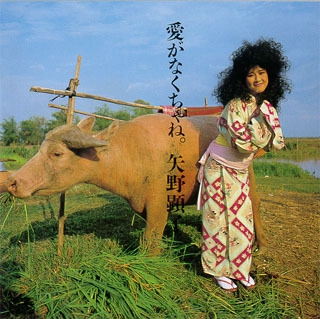
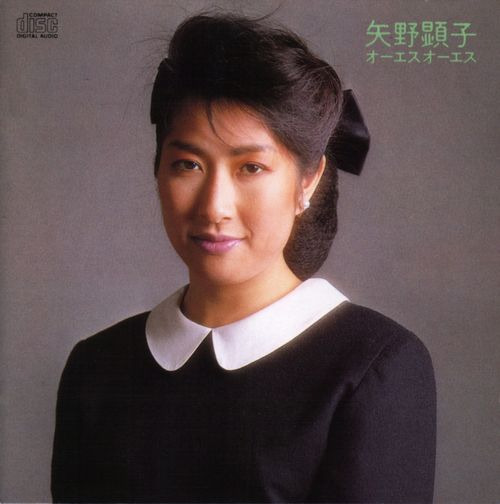
Akiko Yano’s music has always been about its fusion, about her embracing collaborators and sounds and intricately, seamlessly blending them into her own artistic definition. It’s that quality that has truly run through her music over the years, from the careful and intricate blends of lightly jazzy, richly electronic, sometime-new-age-y, often-funky and always-traditional-Japanese-inflected works Nihon shōjo [Japanese Girl], Iroha ni konpeitou [Yellowtail Amberjack] and Tokimeki [Excitement] through to her pacey synthpop bleepers Gohan ga dekitayo [Dinner’s Ready]and Tadaima [I’m Home] and more elegant synthetic pop on Ai ga nakucha ne [There’s got to be love?] and OSOS. So much has passed through the Yano machine, but so much of it has been transformed totally afresh by her rampant eccentricity, thereby making all else feel safe, unambitious, boring.
Pick(s): ‘Kikyū ni notte’, ‘Iroha ni konpeitou’, ‘Yameru wake nya ikanai wa’, ‘Pon pon pon’, ‘Ramen tabetai’
#akiko yano#Nihon shōjo#Iroha ni konpeitou#Tokimeki#Gohan ga dekitayo#Tadaiima#Ai ga nakucha ne#OSOS#pop#art pop#synthpop#progressive pop#art rock#rock#jazz fusion#jazz pop#techno-kayō#new wave#sophisti-pop#1976#1977#1978#1980#1981#1982#1984#music#review#music review
5 notes
·
View notes
Text
I'm just finishing up Let's Face It by The Mighty Mighty Bosstones so don't be embarrassed
What are my sweetie pees on here listening to lately ?
#my wifey found me kylie minogue's fever on cd and i got it yesterday 💙💙#think i will relisten to iroha ni konpeitou now
7 notes
·
View notes
Text

For Luna’s piece in this series, I chose pansies, which come in a variety of colors, much like the konpeitou candies Luna is fond of 🐈⬛
Pansies in the language of flowers signify “thinking of you” or “you’re on my mind”. It’s a fitting flower for Luna, who’s always thinking about Usagi and those around her. And of course in the Princess Kaguya sidestory where she first gained human form, her mind was temporarily preoccupied with her crush on Kakeru.
For me, pansies have been on my mind since I saw them in bloom earlier this year, and the yellow and purple varieties immediately reminded me of Luna. I tried to make the tulle in her skirt sparkly and glittery as I remembered they were in the movie, almost as if there was still a little hint of the magic in the air ✨
118 notes
·
View notes
Text
Introducing The Warlords To Pinatas: Part 1
A little backstory: You really missed pinatas in the Sengoku period, so you made one with paper for lunar new year, and filled it with konpeitou.
Nobunaga:
What is this rainbow donkey?
Oh? It's filled with konpeitou?
He is the one who pops the pinata before everyone else.
And hogs the konpeitou all for himself.
Hideyoshi:
Rainbow donkey-looking paper object?
And it is filled with konpeitou?
He tries to keep it away from his lord at all costs.
But he fails.
Masamune:
He loves this new thing.
He wants to learn how to make them.
Once he learns to make them, he will fill them with all sorts of food for pranking people.
Expect him to make a pinata for every occasion.
Mitsuhide:
He will be watching and mentally laughing at everything that happens.
He helps Masamune making pinatas sometimes.
Ieyasu:
Ew, what is that rainbow vomit?
He wants to burn it.
Mitsunari:
He has no idea that something was hanging from the ceiling until it was popped.
He was too busy reading.
He thought it was raining konpeitou.
He is not much bothered by the rainbow paper, or the konpeitou rain.
Keiji:
That thing looks so annoying.
He wants to whack it with his spear.
But konpeitou rain, yum!
Ranmaru:
He loves the silly rainbow donkey.
And it's filled with konpeitou too!
He will sneakily put more sweets inside the pinata.
He will also try to make one for Kennyo, all by himself.
22 notes
·
View notes
Text
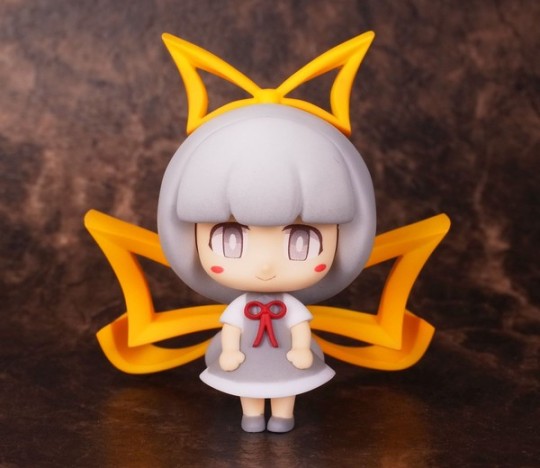
Lasagna Garage Kit by Konpeitou Koubou, from Towelket: One More Time
#lasagna#lasagna towlket#Towelket: One More Time#Taoruketto#Taoruketto o Mouichido#towlket#2019#garage kit#anime figure#anime figures#anime#figure#figures#figurine#figurines
42 notes
·
View notes
Text
Voice claim time!!!
#tf2 g/t#tf2#coralie 🦀#artwork#Frères et sœurs crabes#Kandy Konpeitou#Sister Araignée#Brother Arañito#CRIMSON#tf2 spycrab#spycrabs#spycrab
8 notes
·
View notes
Note
First of all, your translations are amazing!1! I have a question about a scene from the clip https://www.youtube.com/watch?v=GMT28bEmdlA >>timestamp 1:35, about NinMyu 13, where Isaku speaks in Portuguese. The thing is: the portuguese sentence is not making much sense: "Fizemos os discursos que criamos com as leituras dekana, então vamos todos tentar", and as soon as the camera zooms out, the projector turns off, so the best screenshot I took is far from perfect. Could you help me to understand what's written in the Japanese phrase? Ik it sounds rlly specific, it's just that Portuguese is my first language xD, and I wasn't expecting a scene like this to ever happen, even with some references about Portugal in the anime. That was interesting. Thanks for your time!

Hi! Thank you so much!!
Portugal comes up often in Nintama, but I was surprised hearing the students actually speaking and singing in Portuguese in the musical. In this one, they are brainstorming ideas for a cultural festival that will be held at school after the Headmaster got another one of his sudden ideas. This excerpt from youtube is taken from the encore. In the first show, the sixth years only spoke Japanese, with Kanemon asking them what language is written on the paper he was just handed. It goes a little bit differently here:
Tomesaburou (in Portuguese): I suggest a speech contest. Chouji (in Portuguese): We'll be speaking in a foreign language. Isaku (in Portuguese): We wrote the speeches we came up with in yomigana, so give it a try. He means the speech written on the paper was transcribed using kana characters, the letters used in japanese alphabets. I'm not sure about his pronunciation because I do not know a single word of Portuguese, but the end of his sentence sounds like he's saying "tempura", a method for deep-frying food the Japanese learned from Portuguese missionaries during the Muromachi Period, making it an all new dish by the time Nintama takes place. Hence Heisuke's reaction... Heisuke: Tempura...? Shuichirou: In what language are you all speaking? Tomesaburou: "Eu sou um ninja". It's Portuguese!
The youtube excerpt cuts here, but the song "Eu sou um ninja" is supposed to start just after. You can give it a listen here. I'll let you judge the quality of their Portuguese because I can't tell at all lol.
Portugal comes up a lot in Nintama because they were the first Europeans to reach Japan, and it all happened during Muromachi. They famously brought tempura to Japan as I mentioned before, but others stuff mentioned in Nintama as well like castella and konpeitou. They didn't just bring food with them though, and what makes them so relevant to ninjas is how they contributed to the art of war and influenced the outcome of the Sengoku period. The first Portuguese traders arrived on the island of Tanegashima and introduced firearms to the people there, which is why matchlocks are called tanegashima in Japanese (a word you can hear in the ending song Shihou Happou Hiji Deppou~).
Portugal plays an important role in Ninmyu 14, with two ninja characters moving all the way to Portugal, and a Portuguese character appearing in it too!!
11 notes
·
View notes
Text
Nezuko's Favorite: Konpeitou
It's time for Kimetsu Kitchen, and over-analyzing a tiny lore detail! And by tiny, I mean 1.5cm or smaller.
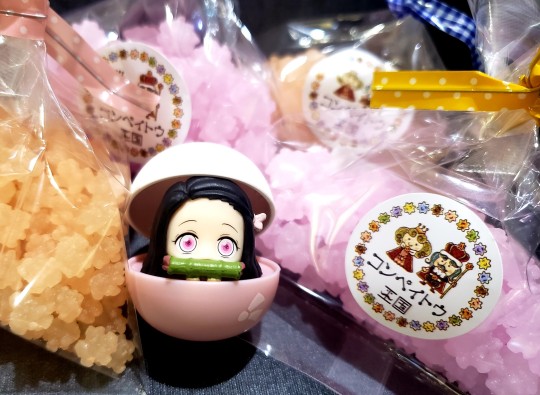
As already stated in the first fanbook, Tanjiro reminds us the Yuukaku Arc Taisho Secrets that Nezuko's favorite food is humans konpeitou, colorful tiny candies that are made almost entirely out of sugar. They are best known for their signature shape, with a bunch of bumps called "tsuno," that is... horns.
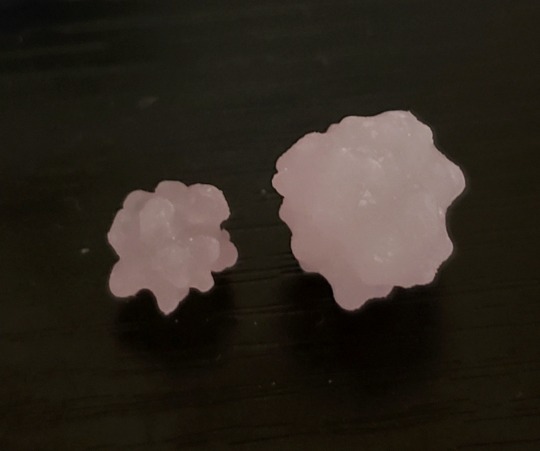
Aha, I see what you did there, Gotouge. So in that light, I'm not going to hold back wherever I see connections to Nezuko. First off, like Nezuko, konpeitou also comes in many fun sizes. Because of how the horns are formed with the candies bumping into each other and dripping onto the biggest protrusions, the candies have fewer and fewer horns as they get bigger.
We'll get into how they are made is a second, but first a brief history. Konpeitou, like castella and tempura, were introduced to Japan in the Sengoku period by the Portuguese missionaries. Warlord Oda Nobunaga was even presented with some earlier versions of this "confeit" that had anise at its core for a refreshing finish. However, after the missionaries were kicked out, they disappeared for a time, until Edo-period townspeople in Nagasaki (with access to trading with the Dutch) developed a pan-fried version, which they named 金平糖 (gold-even-sugar). Konpeitou were a rare treat accessible only the rich and powerful, such has the emperor using it for special occasions, until a new and easier method with rotating frying pans was patented in 1903. This was already 36 years into the Meiji period, and Nezuko would had been a toddler.
The first konpeitou factory opened in 1907 in Osaka, which is when they really took off as a wide-spread treat, including being sent abroad in soldiers' rations. The first ones were not flavored, they were purely made of granular sugar and sugar syrup (a mix of sugar and water, so yay, more sugar!), and they came in four different sizes. However, the first variations came when they made a mix of four basic colors to reflect the seasons: pink for cherry blossoms in spring, green for summer greenery, yellow for the autumn leaves, and white for winter snow.
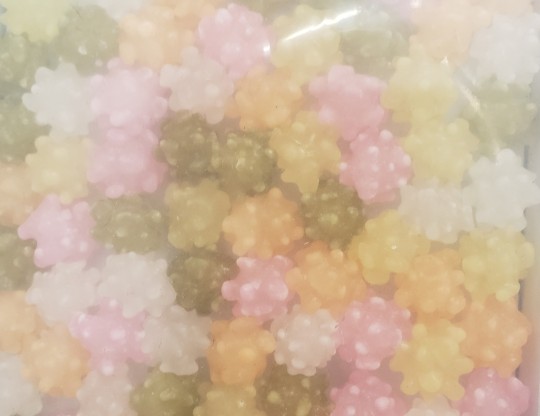
(The closest example I saw to the colors Nezuko might had had available, don't mind those orange ones.)
Throughout the Taisho period they gradually gave way to more popular sweets like ice cream and chocolates, but when Nezuko was a 12-year-old likely around 1912~1913, these would had been widely available and popular.
So how are they made today? Still mostly in Osaka, there's only about 10 factories in Japan that produce them. But only about 5 in Portugal that do, so no wonder people assume they are a Japanese invention! Although you can still find them as purely sugar-flavored and some cafes likes to use them instead of sugar or sugar cubes, you can find them in a very wide variety of colors and flavors now. Basically, if it can be dissolved into syrup, you can color or flavor konpeitou with it.
Konpeitou starts with granular sugar, turned twice a minute in tilted frying pans that are 180cm across at 75 degress C. Every few minutes it gets coated with a scrap of syrup, which gradually makes the candy grow bigger and bigger. It sounds like a simple process, but it takes a lot of patience and practice to get the precise humidity, temperature, timing, and movement to attain a translucent appearance and smooth texture with a pleasing array of horns.
If there is one character in KnY who is extremely patient and can pour that sort of effort into developing something, it's Nezuko. Konpeitou grow only 1mm per day (so it takes two weeks to make a batch of large konpeitou), but that ongoing, dedicated growth is very auspicious, like... hmm. Like what the asanoha pattern on Nezuko's kimono symbolizes. I've always assumed the vines in Nezuko's demon crest symbolized the same thing.
Alright, now to turn this into a Kimetsu Kitchen blog. If you are in Osaka prefecture, you too can join a very brief konpeitou making class to add the finishing touches to a little batch of mostly-finished konpeitou! You get to choose the flavors and colors, and for extra money, you can even add edible gold flakes or get cute jars to put them in. I got to make two batches, one based on the color and flavor already in the first batch. I was concerned out pink and green might mix, so I went with pink followed by yellow for a nice nod to Zenitsu's efforts in Kimetsu Academy to give her the perfect konpeitou. However, I wound up with a nice shade of peachy orange like her hair, and I'm sure Zenitsu doesn't mind.
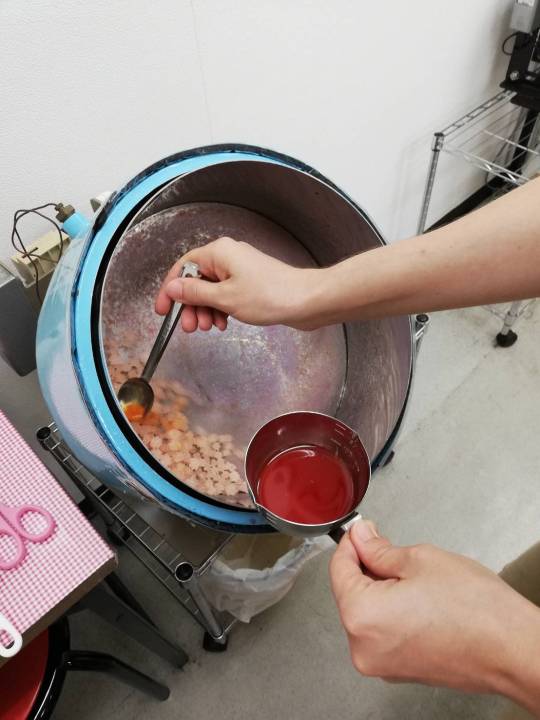
I call the flavor "drink bar" because I thought a non-pick flavor like melon would be ironic and I wound up with a mix of melon and cola. It's pretty good.
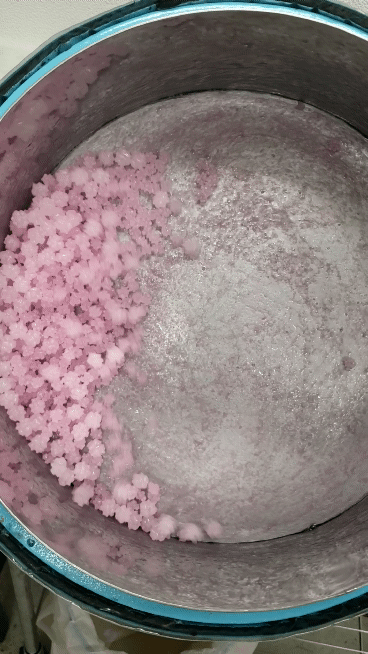

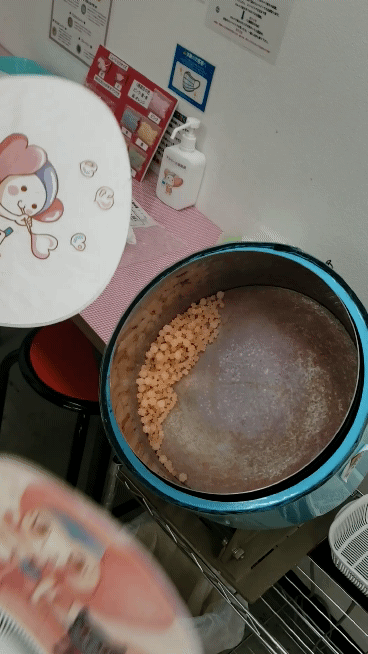
The base konpeitou was purely sugar flavored and white, but with tiny ladles of syrup with food coloring and flavor added and stirred about ten seconds at a time, the shape also gradually changed as the horns got more pronounced. It really is up to taste how little or how much you want to add, they're very versatile once the basics are formed.
106 notes
·
View notes
Text

#susuwatari#soot sprite#ghiblimerchandise#ghibli#necklace#Ghibli necklace#studio ghibli#merch#merchandise#jewelry#konpeito#totoro#anime#anime necklace#anime gift#makkuro kurosuke#black soot#spirited away#charm#pendant#ghibli fan#ghibli movie#ghibli gift#ghiblicore#ghibli style#ghibli aesthetic#ghiblilover#ghibli films#Ghibli jewelry#ghibli core
3 notes
·
View notes